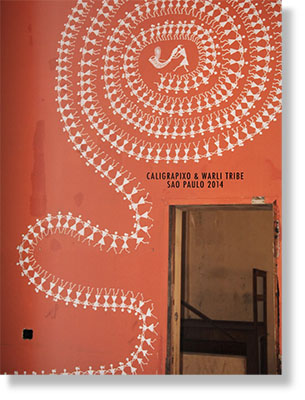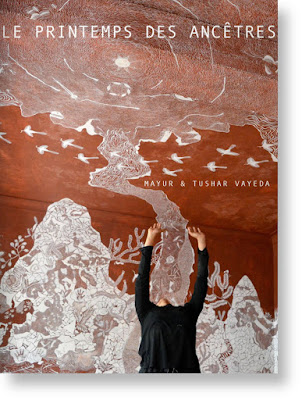
Source Firstpost by Anvisha Manral
In the early hours of 6 October, residents of Naushachapada woke up to Prakash Bhoir's message. Even though the night had been excruciatingly long and anxious, they did not expect to wake up to a new reality: over 300 trees had been axed overnight in their home, also known as “Mumbai's last green lung” — the Aarey forest. Bhoir, an Adivasi activist from Kelti Pada and an unofficial chieftain of his tribe, alerted the neighbouring padas (hamlets) of the overnight events. "It felt like our brothers and sisters had been taken away from us," 17-year-old Sheetal Shigvn told Firstpost, recalling that fateful morning. Quite apart from the sustenance they derive from the forest, the Warli tribe reveres it, for they are devotees of Hirwa Devi, or the ‘Green God’.“Hirwa Dev is believed to reside in the trees. Our god is being taken away from us as we watch," said 15-year-old Ashwini Umbarsadhe. For decades, the Warli people have worshipped the trees that were planted in Aarey by their forefathers. The severing of that relationship has been a personal trauma that some have not been able to fully fathom.
> read more
lundi 21 octobre 2019
Warli tribe's Save Aarey movement serves as beacon of community-spirit and inclusive activism
samedi 12 octobre 2019
100 years of art in Santiniketan

Source Livemint by Somak Ghoshal
It’s 9.30 on a morning in mid-September but it’s sweltering. A group of young men and women are assembled on the chaataal—a raised platform—on the tree-lined campus of Kala Bhavana, the school of visual arts at Visva-Bharati in Santiniketan. The men are in white kurta-pyjama, the women in white saris with red borders. The incoming batch of freshers for the current academic year is being greeted with songs and red roses. Some teachers and non-teaching staff are gathered around. A few visitors like me lurk in the margins. As the ceremony ends, laughter and camaraderie fill the air. The newbies pose with their seniors and faculty for photographs. Selfies are taken. Gradually, the assembly disperses. The seniors march off to rehearse for the cultural programme they have planned in the evening to welcome the juniors. Classes are called off for the day. Behind this scene stretches a century-long history.
> read more
vendredi 11 octobre 2019
MoMA Reboots With ‘Modernism Plus’
Source The New York Times by Holland Cotter
After decades of stonewalling multiculturalism, MoMA is now acknowledging it, even investing in it, most notably in a permanent collection rehang that features art — much of it recently acquired — from Africa, Asia, South America, and African America, and a significant amount of work by women. In short, what’s primarily different about the reopened MoMA is the integrated presence of “difference” itself — a presence that takes the museum back to its experimental early days, when American self-taught art and non-Western art were on the bill. What’s needed is agile planning and alert seeing, and these are evident in the museum’s modestly scaled opening attractions, which include focused surveys of two African-American artists (Betye Saar and William Pope.L), installations by artists from India (Sheela Gowda and Dayanita Singh), a sampler of Latin American work, and a permanent collection gallery devoted to contemporary art from China.
> read more



















